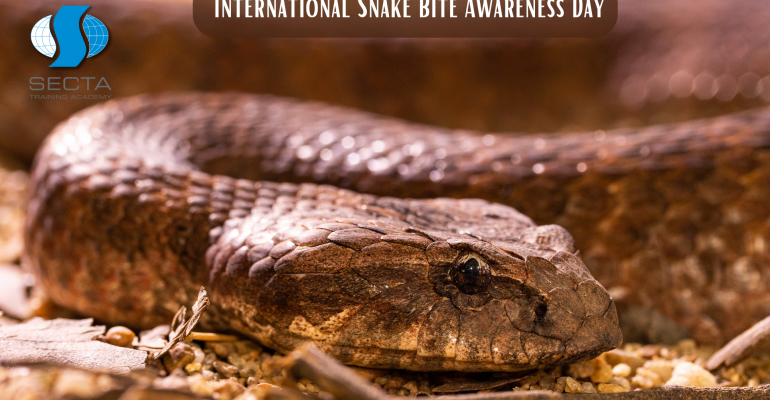International Snake Bite Awareness Day.
19 September 2023 2023-09-19 4:01International Snake Bite Awareness Day.
Subtitle: Can You Spot The Snake Fast Enough? About 3,000 Australians Miss It Every Year!
Introduction
As the warmth of spring and summer envelopes Australia, the great outdoors beckon us to explore its natural beauty. However, with the changing seasons, we must also remain vigilant about certain risks that come with venturing into the wilderness. One such risk is snake bites, a concern that affects approximately 3,000 Australians each year. On this International Snake Bite Awareness Day, we are committed to providing valuable information to help you promote snake bite first aid and stay safe while enjoying the great outdoors.
The Hidden Danger
Australia is home to some of the world’s most venomous snakes, and their presence becomes more pronounced as the weather gets warmer. These reptiles are skilled at camouflage, often blending seamlessly with their surroundings, making them difficult to spot. With their remarkable agility and speed, it’s not surprising that thousands of Australians fall victim to snake bites annually.
The Importance of Awareness
Awareness is our first line of defense against snake bites. Knowing how to spot a snake and understanding what to do in case of a bite can be life-saving knowledge. By sharing this information, we aim to reduce the number of snake bite incidents and ensure that individuals are adequately prepared when they venture outdoors.
Spotting a Snake: Key Tips
Stay Calm: In the presence of a snake, it’s crucial to remain calm. Most snakes are not naturally aggressive and will only bite if they feel threatened.
Give Space: Maintain a safe distance from any snake you encounter. Do not try to approach or handle it.
Observe from Afar: If you spot a snake, carefully observe its appearance and markings from a safe distance. This information can help medical professionals identify the snake’s species in case of a bite.
Back Away Slowly: If you encounter a snake, back away slowly and make a wide detour to leave the area. Do not turn and run as this may trigger a chase response.
Wear Appropriate Footwear: When exploring snake-prone areas, wear sturdy, closed-toe shoes and long pants to minimize the risk of a bite.
First Aid for Snake Bites
If, despite all precautions, a snake bite does occur, knowing the correct first aid steps is essential:
Keep Calm: Encourage the victim to stay calm and still to slow the spread of venom.
Immobilize the Affected Limb: If bitten on a limb, immobilize it with a splint or bandage to reduce movement.
Remove Tight Clothing and Jewelry: Swelling may occur, so remove any tight clothing, watches, or jewelry near the bite site.
Apply a Bandage: Use a bandage or dressing to wrap the entire limb, starting from the bite site and moving upwards. Apply moderate pressure but avoid cutting off circulation.
Seek Medical Help: Get the victim to a medical facility as soon as possible, and if possible, call ahead to notify them of the situation.
Conclusion
On this International Snake Bite Awareness Day, let’s remember that knowledge and awareness are our allies in staying safe in snake-prone areas. By being informed and knowing how to respond in case of a snake bite, we can minimize the risks and continue to enjoy the beauty of the Australian outdoors with confidence.
So, as you embark on your spring and summer adventures, be vigilant, stay safe, and share this vital information with friends and family. Together, we can make a difference and reduce the number of snake bite incidents in Australia.



